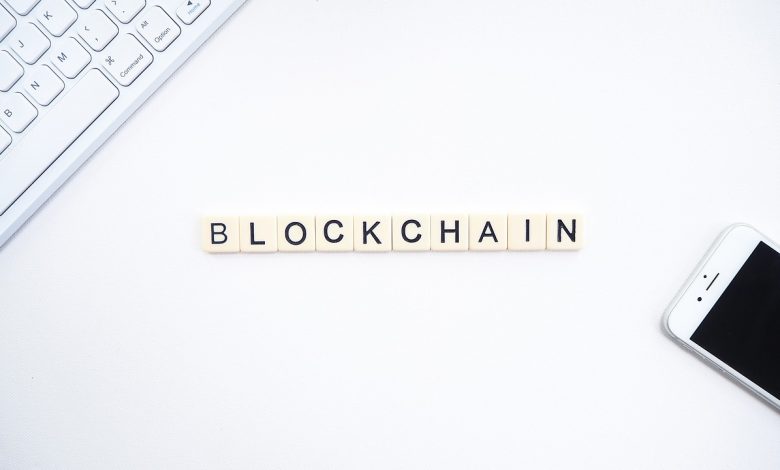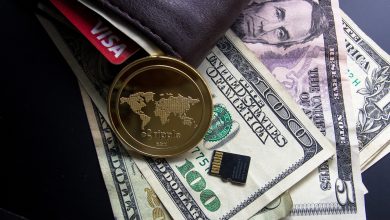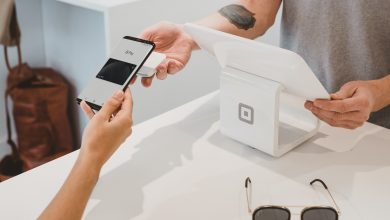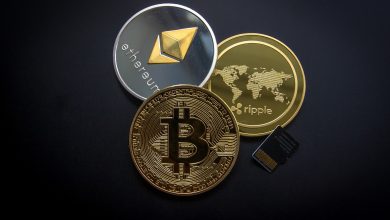Crypto and Digital Currencies: How Does Blockchain Work?

“Blockchain” is quite the buzzword these days. It’s becoming increasingly popular, yet it’s also still so new that many of its technical definitions are dizzyingly complex, while some simpler explanations can be somewhat hazy. The myriads of variations being built on top of blockchain don’t help to simplify the matter, and there may never be an evergreen definition or perfect analogy when it comes to rapidly developing technology. However, the basic parameters of blockchain essentially remain constant across the spectrum, so let’s take a look at some of the basic building blocks (pun intended).
Transactions & Records
Blockchain involves two elements: transactions that occur specifically by way of public key cryptography, and records of those transactions that are sealed using similar advanced encryption techniques. Public key cryptography, while it sounds intense, basically uses military-grade encryption to create a set of codes that allow the parties in a transaction to verify one another’s information without making that information public. It’s complex, and involves combining a public key and a private key to make a shared key, that is then combined with the private key again resulting in information only the parties can know because only they have access to all three keys. The endgame, though, is this: no one can tamper with the transaction, neither can they gather enough information from either party to reproduce it. Developed in 1976 by Whitfield Diffy and Martin Hellman, this is the beauty of public key cryptography and the basis of cryptocurrency transactions.

But the process doesn’t end there. Successfully completing a transaction is great, but what about after the fact? What about if you want to prove you made the transaction? As secure as your sale or purchase might have been, if there is no record of it there’s not much point. The next couple of steps involve something called digital signatures, so it bears explaining generally what that is and why it matters. What is a digital signature? It’s the product of another bit of encryption. It uses math to create a string of alphanumeric values that will result in the same value from the same input every time. Meanwhile, if even one input value is altered, the resulting signature would be wildly different. The string usually has 256 characters (if you ever hear the term “SHA-256” this is what that relates to), meaning it would take modern computers millions of years to run all the possible combinations – which is a long way of saying each signature is unique.
Putting It Together
So a completed transaction gets its own digital signature. This signature then gets put together with a bunch of other signatures from transactions that occurred around the same time. This group – or block – then gets its own digital signature as a whole. Imagine if you move from your home to a new place. You gather relevant items together, put them in a box, and label the box. The process is the same. The difference with your moving boxes is that you probably just use a label like “kitchen” instead of a weird code, meanwhile you also won’t glue the boxes all together because you want to unpack them later. Blockchain, though, doesn’t want anyone to disassemble its blocks ever, and does exactly that. It’s this last bit of mathematical magic that makes their records immutable. The signature of each new block is combined with the signature of the block before it. Their combination is then encrypted, resulting in a new unique signature that represents their connection. You could think of it like a chemical reaction, or like loops in crochet. This is the power of blockchain. The fact that each block’s identity is connected to the one before it means that if even one value of its information is changed, the equations used to secure its place would no longer make sense. The block that was tampered with as well as every block after it would automatically become invalid. To use the crochet example, it would be as if you cut one thread. One severed connection unravels the whole thing.
A New Industry
There is a lot more to blockchain than just blocks and links. Various protocols verify information differently, and you’ll hear a lot about the advantages and disadvantages of decentralized, centralized, and even distributed networks. However, blockchain and all its corresponding components are simply the beginning of a new, complex industry. In aviation, for example, we may not understand the innermost workings of a plane. Likewise, we don’t need to be able to build one to use one, but we are familiar with the basic concepts of pressure and lift that make it work. Cryptocurrencies, digital currencies, and blockchain may sound confusing, and they definitely can be. However, simply understanding what the fuss is all about – and primarily, that there is actually a legitimate reason for all the fuss to begin with – is enough to provide a good foundation for interacting with blockchain and all the ways that it may be a part of our lives in the future.



